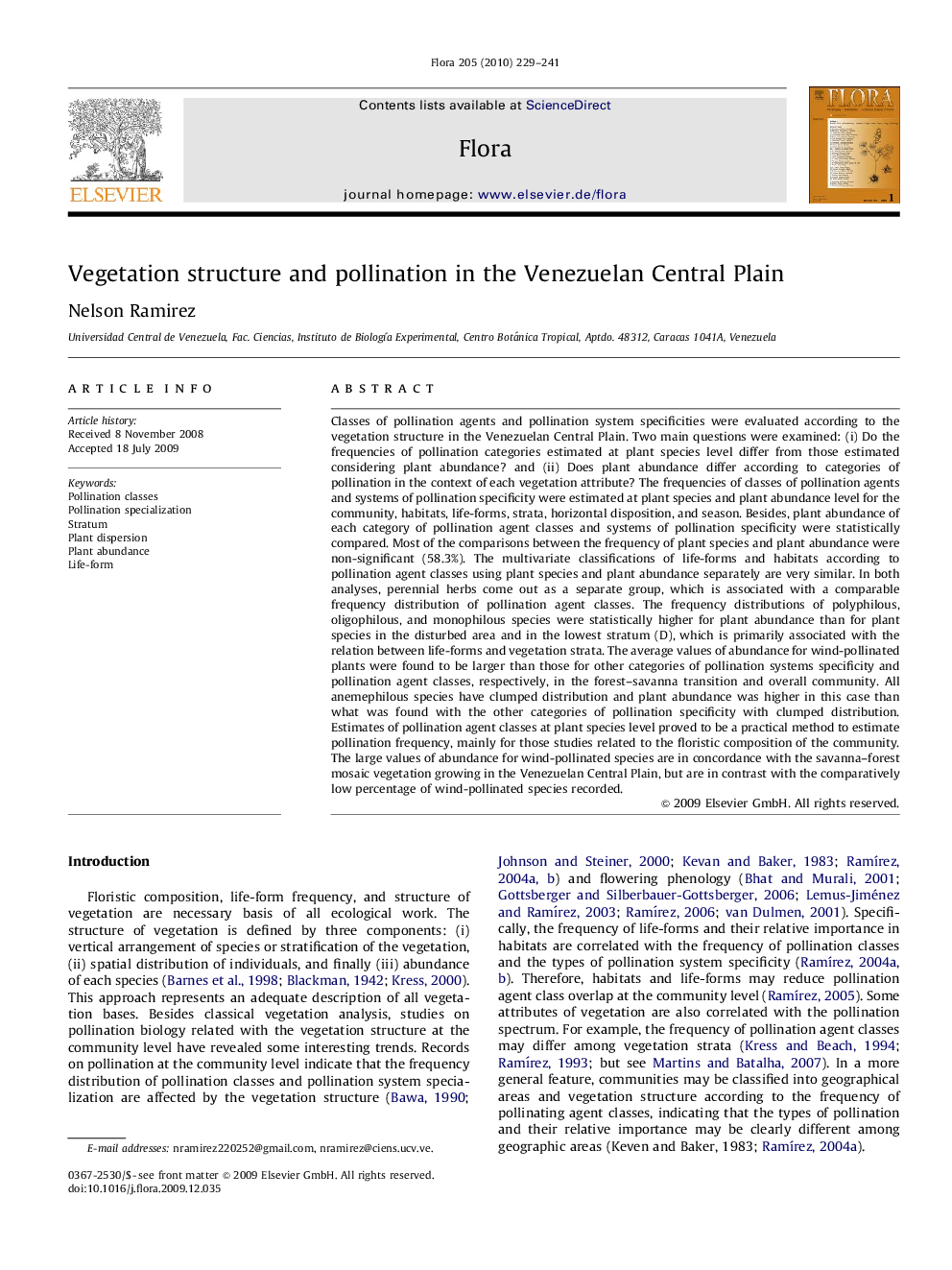| کد مقاله | کد نشریه | سال انتشار | مقاله انگلیسی | نسخه تمام متن |
|---|---|---|---|---|
| 2179933 | 1095095 | 2010 | 13 صفحه PDF | دانلود رایگان |

Classes of pollination agents and pollination system specificities were evaluated according to the vegetation structure in the Venezuelan Central Plain. Two main questions were examined: (i) Do the frequencies of pollination categories estimated at plant species level differ from those estimated considering plant abundance? and (ii) Does plant abundance differ according to categories of pollination in the context of each vegetation attribute? The frequencies of classes of pollination agents and systems of pollination specificity were estimated at plant species and plant abundance level for the community, habitats, life-forms, strata, horizontal disposition, and season. Besides, plant abundance of each category of pollination agent classes and systems of pollination specificity were statistically compared. Most of the comparisons between the frequency of plant species and plant abundance were non-significant (58.3%). The multivariate classifications of life-forms and habitats according to pollination agent classes using plant species and plant abundance separately are very similar. In both analyses, perennial herbs come out as a separate group, which is associated with a comparable frequency distribution of pollination agent classes. The frequency distributions of polyphilous, oligophilous, and monophilous species were statistically higher for plant abundance than for plant species in the disturbed area and in the lowest stratum (D), which is primarily associated with the relation between life-forms and vegetation strata. The average values of abundance for wind-pollinated plants were found to be larger than those for other categories of pollination systems specificity and pollination agent classes, respectively, in the forest–savanna transition and overall community. All anemephilous species have clumped distribution and plant abundance was higher in this case than what was found with the other categories of pollination specificity with clumped distribution. Estimates of pollination agent classes at plant species level proved to be a practical method to estimate pollination frequency, mainly for those studies related to the floristic composition of the community. The large values of abundance for wind-pollinated species are in concordance with the savanna–forest mosaic vegetation growing in the Venezuelan Central Plain, but are in contrast with the comparatively low percentage of wind-pollinated species recorded.
Journal: Flora - Morphology, Distribution, Functional Ecology of Plants - Volume 205, Issue 4, 2010, Pages 229–241